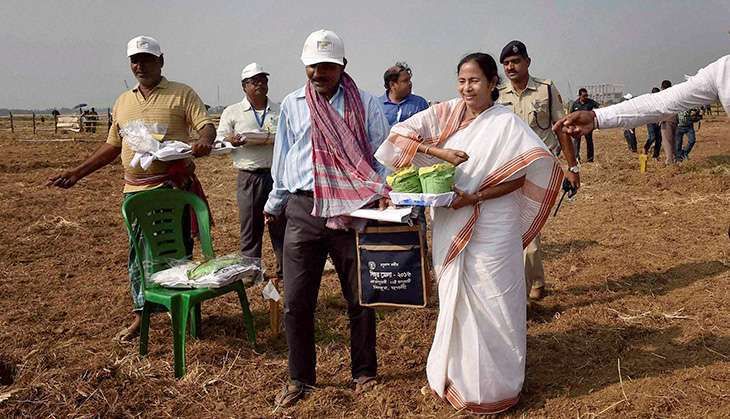Mamata Banerjee has been the face of the land movement in Bangla. It was she who fearlessly fought against the tyranny of the Left Front Government during the Singur and Nandigram movements.
In 2006, the Left-led Government acquired 997 acres of multi-crop land for a car factory in Singur. The forcible acquisition, which was made under the colonial Land Acquisition Act of 1894, led to protests all over Bangla, led by Mamata Banerjee. She even went on a hunger strike for 26 days for the sake of farmers’ rights.
In 2011, Mamata Banerjee became the Chief Minister of Bangla after the people voted in large numbers for a change of guard in the State. Since then, the Government has taken up numerous initiatives for land reforms.
Here are some of the most important achievements:
Singur verdict
In compliance with the landmark verdict of the Hon. Supreme Court of India, land amounting to almost 980 acres, situated within the erstwhile Singur Project Area, has been returned to almost 12,000 families dispossessed by the project, after making the land suitable for cultivation.
New Land Bill
Following the footsteps of Bangla, the Right to Fair Compensation and Transparency in Land Acquisition, Rehabilitation and Resettlement (Amendment) Bill, 2015 was introduced in the Lok Sabha on February 24, 2015. The Bill replaced the Right to Fair Compensation and Transparency in Land Acquisition, Rehabilitation and Resettlement (Amendment) Ordinance, 2014.
Land Policy
From 2011 to 2018, many important policy decisions have been taken for achieving better administration, regulation and management of land:
In a bold policy initiative, the State Government has decided to waive tax on agricultural land. This will go a long way in not only mitigating hardships faced by farmers but also boosting agricultural output and income.
The Land Allotment Policy was formulated in financial year (FY) 2012-13 in order to introduce uniformity, reduce discretion and ensure transparency while dealing with public assets. The policy laid down a transparent process for allotments of land along with the terms for such allotments.
The Land Purchase Policy was introduced in FY 2014-15 to enable the State Government and its parastatal agencies to purchase land for infrastructure projects through a process of direct negotiation with willing landowners against just compensation and incentives. The scope of this policy was extended to land purchase for Central Government departments as well in FY 2016-17. The stated policy of the State Government is that there will be no forceful acquisition of land. The purchase policy of the Government is thus consent-based and transparent. So far, the Standing Committee on Industry, Infrastructure and Employment has cleared direct purchase of about 950 acres for various projects of public importance.
The State Land Use Board has developed a Land Bank of available land in all the districts of Bangla with a view to ensuring availability of land for infrastructural development for industries and other developmental work, including flagship projects of the State.
Amendments to Section 14Y of the West Bengal Land Reforms Act, 1955 were carried out in 2014 to broaden the scope of the section. Now entrepreneurs may, with prior permission of the Government, utilise ceiling-surplus land to set up units for various industrial and social infrastructural activities in sectors like information technology, shipbuilding, township, transportation terminal and logistics hub, in addition to existing sectors.
Land Use Map
Utilising the concept of index-linked land use, zoning maps were introduced in FY 2011-12 for the use of investors. Land Use Maps broadly contain parameters like dry/ barren land, single-crop land, double/ multi-crop land, forest land, metalled roads, national /state highways, railway network, waterbodies, etc.
Nijo Griha Nijo Bhumi
NGNB (launched in 2011) provides up to 5 decimal land to eligible beneficiary families (all rural landless and homeless agricultural labourers/ artisans/ fishermen). Almost 2.2 lakh NGNB pattas have been distributed under this scheme so far.
From 2011 to 2017, a total of more than 3 lakh pattas (including NGNB, agricultural and forest pattas) were distributed.


